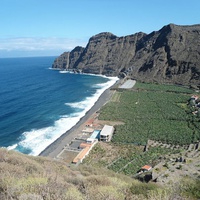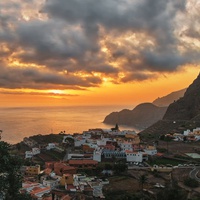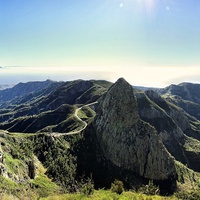Visit to La Gomera, a natural paradise
Shore excursion from port of San Sebastian de La Gomera, Spain
- Duration 4h
- Activity level medium
What you'll do
Pick up at the port of San Sebastian by our guide with the Shorexc sign.
La Gomera is one of the eight islands in the western part of the Canary archipelago, the second smallest island, belongs to the province of Santa Cruz de Tenerife and was declared a Biosphere Reserve in 2012. La Gomera, like the rest of the Canary Islands, is a volcanic island, however, volcanic episodes can be considered a thing of the past, the last eruptions occurred about two million years ago. The erosion of the water has traced numerous ravines, and on the coast has delineated prominent cliffs, turning the island into a unique landscape of natural beauty. In the center of the island is the Garajonay National Park, declared a World Heritage Site in 1986 by Unesco, the first declared in the Canary Islands, which together with the silbo gomero, a whistled language inherited from the Gomeran aborigines, heritage since 2009, are part of its identity.
Our visit will begin in Hermigua, in the north of the island, a paradise of green terraces, banana trees, tranquility and peace. Hermigua descends from Garajonay to the sea, spilling into a green carpet of laurel, to die at the feet of the old Pescante beaten by the Atlantic. This valley, still and deep, hides a good part of the history of La Gomera and is an encounter for the visitor eager for nature and tranquility.
From there we will approach Agulo, which together with Hermigua constituted the aboriginal territory of Mulagua. Considered by many as the most beautiful village of La Gomera and Spain; an immense viewpoint tinged by the green of its crops over the Atlantic Ocean, a charming village cared for with care and attention, cobbled streets and well-kept and restored fairytale houses, certainly a rural corner full of charm that will leave us a delicious taste in our mouths. In the municipality is the Visitor Center of Juego de Bolas, where information about the national park is offered.
From there we will go to the Laguna Grande in the Garajonay National Park, established in 1981 and later named a UNESCO World Heritage Site. It occupies 10% of the island's surface and is home to a natural jewel from the Tertiary period: the laurel forest. This subtropical plant formation is made up of a great variety of trees that keep their foliage throughout the year thanks to the high humidity and mild temperatures. This forest, considered a living relic, covered the Mediterranean basin during the Tertiary, and disappeared almost entirely with the successive glaciations.
Our last stop will be at the Roques viewpoint, Roque Agando, the most impressive of the island.
Return to the port of San Sebastian for farewell.
Details
NO SUPPLEMENT




